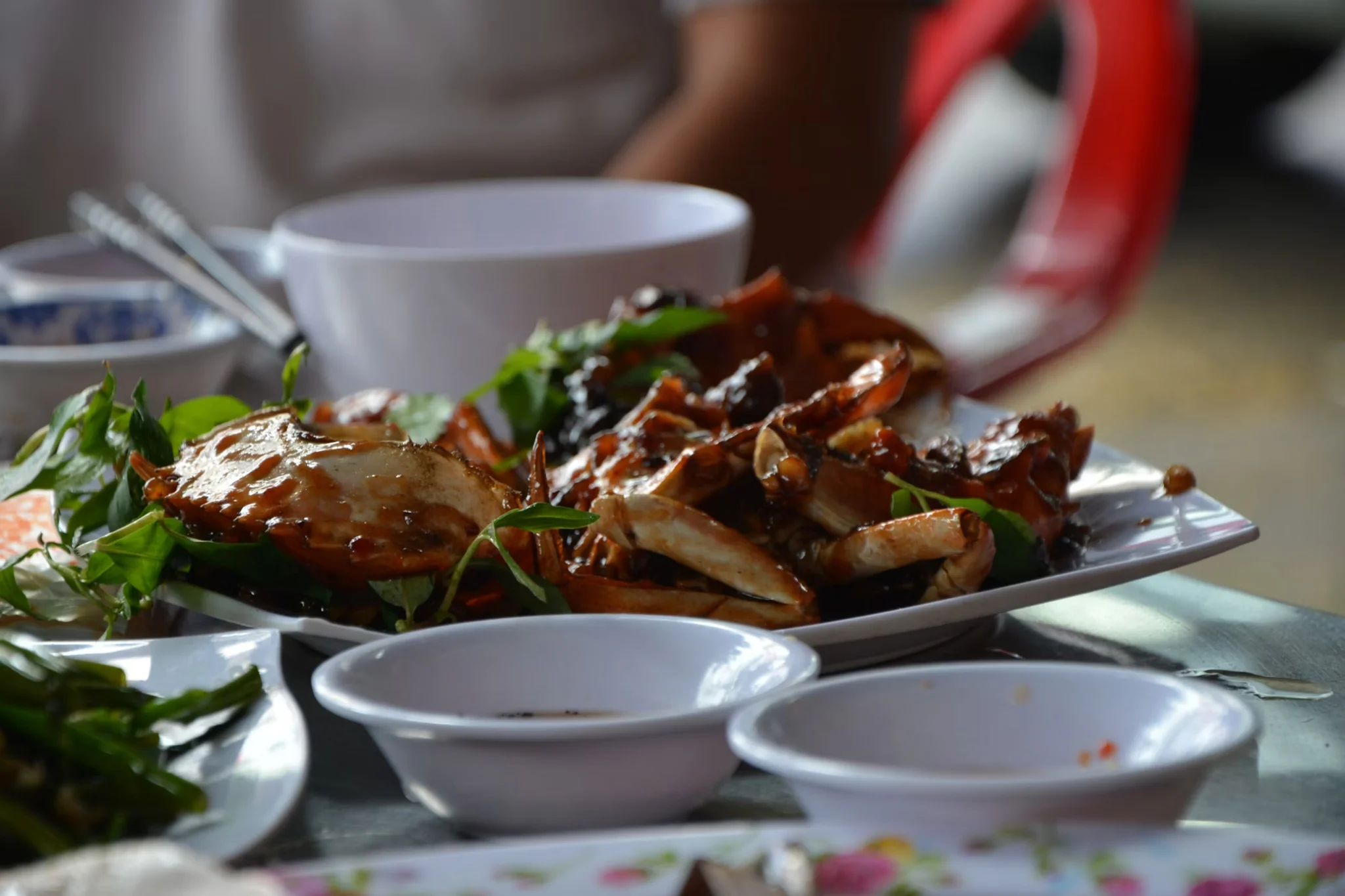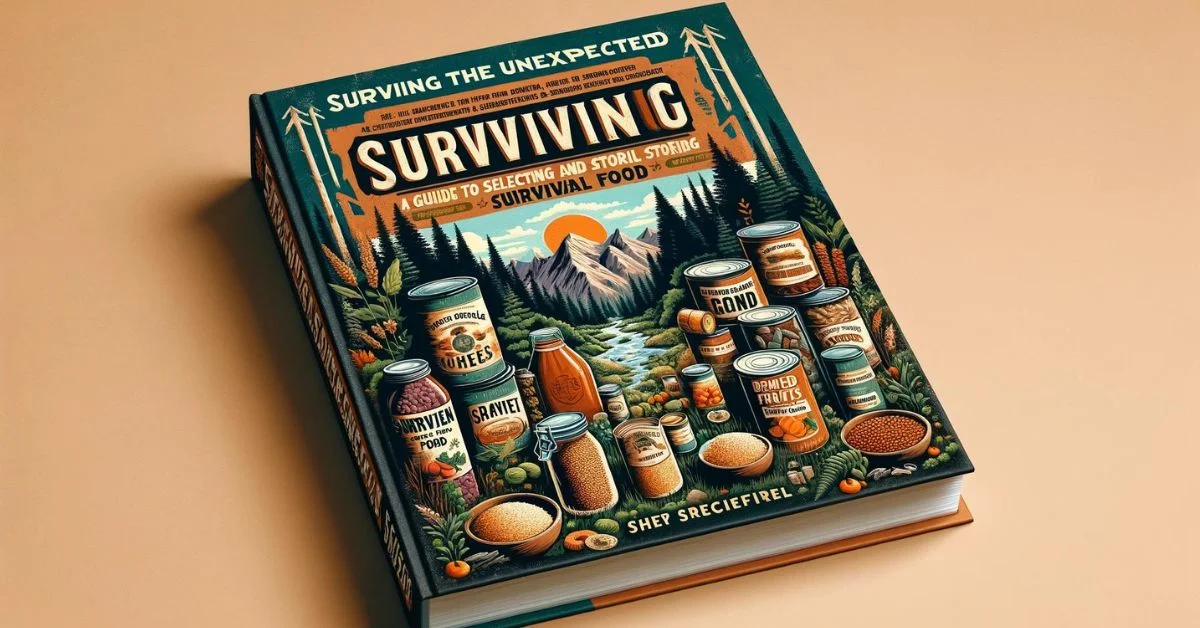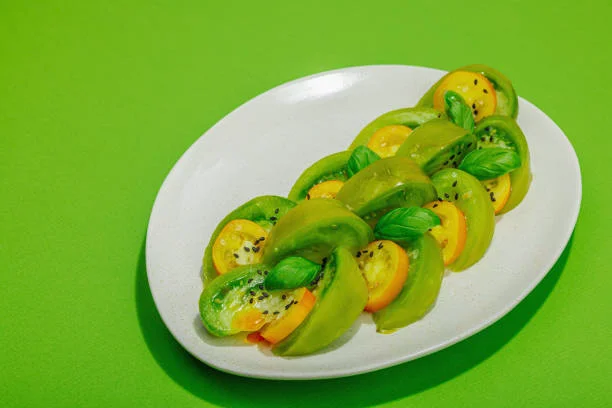FOOD & DRINKS
Tips for Whipping Up Sweet Treats in Minutes

Whipping up sweet treats doesn’t have to be a time-consuming affair. Imagine the possibility of indulging in a homemade dessert on any given night without the lengthy preparation or cleanup usually involved.
Cravings for something sweet after dinner or the need for a quick treat for unexpected guests can be satisfied effortlessly. The temptation of these quick desserts lies in their delicious taste, simplicity, and the speed with which they can be prepared. From smoothies that double as dessert shakes to elegant treats crafted from puff pastry, the options are both endless and incredibly easy to execute.
This guide offers a range of clever shortcuts and tips that help in creating mouth-watering desserts in just minutes. It delves into making the most of kitchen tools, preparing single-serving delights to curb sweet cravings, and adding a personal touch to store-bought treats. Armed with a little creativity and a few pantry staples, delightful and quick dessert preparations are readily achievable.
1. Use Pre-Made Mixes to Save Time
Pre-made mixes are a fantastic time-saver in the kitchen. They reduce the measuring and mixing of dry ingredients and ensure consistent results every time. To personalize a store-bought mix and make it feel more homemade, try adding an extra ingredient or two. For instance, adding a dash of vanilla extract, a handful of nuts, or some fresh berries to a pancake mix can elevate the flavor and make your quick dessert feel special without much effort.
2. Start with Simple Ingredients
One of the quickest ways to enjoy a homemade dessert is to focus on recipes that require minimal, easy-to-find ingredients. Take for example, the chocolate chip mini muffins recipe by Eating on a Dime. You only need some basic pantry items like flour, sugar, baking powder, eggs, milk, and, of course, chocolate chips. Just mix your dry ingredients, blend in the wet ones, fold in the chocolate chips, and spoon the batter into a mini muffin tin. Bake for about 10 to 15 minutes, and you’ve got yourself a delightful treat that didn’t take an entire afternoon to make!
3. Master the Microwave
The microwave isn’t just for reheating leftovers. It’s a powerful tool for making desserts quickly. Mug cakes are a perfect example. You can whip up a delicious cake in under five minutes. Simply mix a few tablespoons of flour, sugar, cocoa powder, baking powder, milk, oil, and an egg in a mug. Pop it in the microwave for about 90 seconds, and voilà, you have a personal cake ready to eat. Experiment with different flavors like peanut butter, banana, or even red velvet for variety.
4. No-Bake Treats
No-bake desserts are not only quick to prepare but also incredibly versatile. They range from luxurious cheesecakes to simple yet elegant chocolate truffles. For a quick, no-bake cheesecake, mix cream cheese with powdered sugar, a touch of vanilla, and a little lemon juice. Spoon the mixture over a base of crushed graham crackers in a cup, then chill for an hour. Top with fresh fruit or a drizzle of chocolate, and you have a dessert that’s both effortless and impressive.
5. Keep Frozen Fruit Handy
Frozen fruit is a must-have for quick desserts. It’s perfect for whipping up smoothies, making fruit compotes, or as a topping for ice cream and yogurt. You can also make a quick sorbet by blending frozen berries with a splash of juice or syrup until smooth. Serve it immediately for a refreshing treat that’s both quick and healthy. Frozen fruit ensures that you always have something on hand to create a sweet dish, even when fresh produce is not available.
6. Embrace the Blender for Smoothies and Shakes
Smoothies and shakes are not only nutritious but also serve as delicious dessert options, especially when you’re short on time. Using a blender, you can combine milk or yogurt with your choice of fruits, a scoop of ice cream, or even some chocolate for a tasty treat. Add a bit of honey or maple syrup for sweetness, and blend until smooth. For an extra touch, sprinkle on some cinnamon or cocoa powder before serving. This method is perfect for using up leftover fruits and can be prepared in less than five minutes.
7. Utilize Puff Pastry for Quick Fancy Desserts
Puff pastry is a versatile ingredient that can be a lifesaver for quick dessert preparations. Available in the freezer section of most grocery stores, it can be thawed and used to create a variety of elegant desserts. For a simple yet impressive dessert, cut the pastry into squares and top each with a spoonful of fruit preserves or fresh fruit and a sprinkle of sugar. Bake according to package instructions until golden and puffed. Serve warm for a delightful treat that looks like it took much more effort than it did.
8. Quick Cookie Decorating Tips
If you have pre-made or slice-and-bake cookies, you can still add a homemade touch with some quick decorating. Melt chocolate chips or candy melts in the microwave, and use a fork to drizzle the melted chocolate over the cookies. Add sprinkles, colored sugar, or edible glitter for a festive touch. This is particularly great for involving kids in the kitchen or for making last-minute treats for parties or gatherings. The decoration takes minimal time but makes your cookies look uniquely handcrafted.
9. Single-Serving Desserts to Avoid Leftovers
Creating single-serving desserts is a smart way to indulge without leftovers tempting you the next day. Individual desserts can be prepared quickly and are perfect for when you only need a small sweet treat. Consider mug cakes, small parfaits, or even a single-serve fruit crisp. Simply layer granola, fruit, and a dollop of whipped cream or yogurt in a small cup for a quick parfait. These single servings ensure you enjoy a fresh dessert without the temptation of eating more than you planned.
10. Organize Your Workspace for Swift Baking
An organized kitchen is key to efficient baking. Organize your ingredients, tools, and equipment so everything is easily accessible. This reduces the time you spend searching for items and speeds up the preparation process. Keep commonly used ingredients like sugar, flour, and baking spices on an accessible shelf or in clear containers. Ensure that mixing bowls, measuring spoons, and other equipment are within easy reach. This setup not only saves time but also makes the baking process more enjoyable.
Conclusion
By incorporating these practical tips into your dessert-making routine, you can whip up delightful treats in no time. From using convenient kitchen tools like blenders and microwaves to employing no-bake recipes and pre-made mixes, there are numerous ways to simplify the dessert process. Organizing your space and focusing on single-serving portions can further enhance your efficiency. Embrace these strategies, and you’ll find that making homemade desserts doesn’t have to be a lengthy or complicated affair. With these tips, you can easily prepare quick and delicious sweet treats that are sure to impress.
FOOD & DRINKS
What are the Health Benefits of Adding Blue Swimmer Crabs to Your Diet?

More than a mere delicacy, blue swimmer crabs also offer a range of health benefits that make it such a valuable addition to your diet. Packed with essential nutrients and low in calories, a blue swimmer crab can contribute to overall well-being and support various aspects of health. Let’s explore the health benefits of adding blue swimmer crab to your diet.
Rich Source of Protein
If you’re an active person, here’s a good reason to learn how to cook blue swimmer crab. This seafood option is an excellent source of high-quality protein, essential for building and repairing tissues in the body. Protein is also important for supporting muscle growth, maintaining healthy hair and nails and keeping you feeling full and satisfied after meals.
Low in Fat and Calories
Despite its rich taste and texture, blue swimmer crab is relatively low in fat and calories, making it a healthy choice for those watching their weight or looking to maintain a balanced diet. By incorporating blue swimmer crab into your meals, you can enjoy a satisfying and flavourful dish without worrying about excessive calorie intake.
High in Vitamins and Minerals
Blue swimmer crab is packed with essential vitamins and minerals that are vital for overall health and well-being. It’s particularly rich in Vitamin B12, which supports nerve function and helps prevent anaemia.
In addition, blue swimmer crabs contain significant amounts of Vitamin C, Vitamin E, magnesium and selenium, all of which play important roles in various bodily functions.
Omega-3 Fatty Acids
Like many seafood, blue swimmer crab is a good source of omega-3 fatty acids, which are known for their heart-healthy benefits. Omega 3s help reduce inflammation in the body, lower triglyceride levels and support cardiovascular health. Incorporating blue swimmer crab into your diet can help reduce the risk of heart disease and improve overall heart function.
Promotes Bone Health
Blue swimmer crab is rich in minerals like calcium, phosphorus and zinc, which are all essential for maintaining strong and healthy bones. These minerals help support bone density, prevent osteoporosis and reduce the risk of fractures and bone-related disorders, especially as you get older.
Supports Immune Function
The vitamins and minerals found in blue swimmer crabs, such as Vitamin C, Vitamin E and selenium, play important roles in supporting immune function and helping the body fight off infections and diseases. By incorporating blue swimmer crabs into your diet, you can give your immune system a natural boost and stay healthy year-round.
Blue Swimmer Crab: Sumptuous and Nutritious
Still haven’t tried blue swimmer crabs? It’s time to incorporate them in your diet and reap a range of benefits from getting essential nutrients to enhancing your overall well-being. Whether you enjoy it steamed, grilled or in a delicious seafood pasta, this delicious seafood option is a versatile and nutritious addition to any meal. So, the next time you’re planning your menu, consider adding blue swimmer crab for a tasty and healthful dining experience.
FOOD & DRINKS
Surviving the Unexpected: A Guide to Selecting and Storing Survival Food

In the arena of emergency preparedness, the selection and storage of survival food is a topic often overlooked and yet crucial for a well-rounded survival plan. Whether prompted by natural disasters, economic downturns, or even global pandemics, the ability to sustain oneself with a carefully curated supply of food is not just for the doomsday prepper—it’s a prudent measure for any responsible individual or family. This comprehensive guide is your ticket to navigating the world of survival food and ensuring you’re prepared for the unexpected.
Understanding the Basics
Before you rush off to stockpile cans of whatever you find on the freeze dried store shelves, it’s important to understand the basics. Not all foods are created equal in terms of longevity and nutrition, which makes informed selection and thoughtful storage paramount.
Nutritional Value
In a crisis, the nutritional value of the food you consume is arguably just as important as its caloric content. Your body will require a balance of proteins, fats, and a whole spectrum of vitamins and minerals to cope with stress and maintain health. MREs (Meals Ready-to-Eat) are a popular choice due to their balanced nutrition, but options like dried fruits, nuts, and freeze-dried vegetables can also be excellent sources of essential nutrients.
Shelf Life
The shelf life of your survival food can vary dramatically. Canned goods, for instance, can last for several years, while freeze-dried foods can last even longer. Understanding these timelines and the best practices for storage will ensure your food doesn’t spoil or lose nutritional value over time.
Availability and Allergies
When selecting survival food, consider the dietary restrictions and preferences of your household. It’s also wise to ensure that your chosen foods are available and can be stored safely at your place of residence.
How to Select the Right Survival Foods
Your survival food supply should be as diverse as your regular grocery list, with the added caveat of longevity and ease of preparation. Here are a few pointers to guide your selection process:
Diverse Food Group Representation
Aim for a variety of foods that represent different food groups. Remember, variety not only provides a more interesting diet but also ensures a wider array of nutrients.
High-Calorie Foods
In a crisis, you will likely be more active and burning more calories. Foods high in caloric content, such as nuts and seeds, will be essential for maintaining energy levels.
Long Shelf-Life Products
Foods with long shelf-lives, such as dehydrated meals, rice, and canned goods, should make up a bulk of your supply. Rotate these out over time to maintain freshness.
Easy-to-Prepare Options
During an emergency, the last thing you want is to grapple with complicated recipes. Choose foods that require minimal preparation and no refrigeration, like instant oatmeal and canned beans.
Storing Survival Food
Once you’ve amassed a collection of survival food, the next critical step is proper storage. Here’s how to keep your stash safe and sustainable:
Consider the Storage Environment
Where you keep your survival food can be just as important as what you keep. Find a cool, dark place with a relatively stable temperature to store your supplies. Basements, root cellars, and even portions of your home that don’t get direct sunlight are ideal.
Organize and Label Everything
Proper organization and labeling will help you rotate your supply as you purchase new items. Use a system that ensures the oldest food gets used first, such as the first in, first out (FIFO) method.
Keep Pests and Oxygen at Bay
Invest in quality storage containers to protect your food from oxygen and pests. Oxygen absorbers and sealed Mylar bags can help extend the shelf life of foods like rice and pasta.
Plan for Water and Preparation
Water is as essential as food for survival. Ensure you have enough stored water not just for drinking, but also for rehydrating any dehydrated or freeze-dried foods.
Handling Emergencies and Adaptation
Your survival food plan should not be a static document but rather a flexible one that can adapt to changing situations:
Stay Informed
Keep yourself updated on the latest in emergency preparedness, food safety, and nutritional information. Consider joining preparedness groups or online forums to exchange knowledge and tips.
Practice Makes Perfect
Actually try preparing your survival meals under controlled conditions. This will help you gauge the time and effort required, and you may discover that you need extra utensils or tools.
Reflect and Evolve
Debrief after each preparation session or after experiencing a minor emergency. Reflect on what worked and what didn’t, and be willing to adapt your plan accordingly.
What Not to Do
There are a few common mistakes that can easily derail your efforts towards establishing a reliable survival food plan:
Don’t Overlook Water
More critical than food, water is essential and often overlooked. Ensure you have a robust strategy for storing water alongside your food supply.
Don’t Forget the Multivitamins
While your best attempt at a well-rounded food supply is commendable, it may not cover all nutritional bases. Multivitamins can provide a safety net for any gaps in your diet.
Don’t Rely Solely on Foraging
Even if you’re well-versed in wild edibles, environmental conditions during an emergency might render foraging ineffective. Rely on your stored food first and use foraging as a supplemental strategy.
Conclusion
Preparing for unforeseen events is not a task to be taken lightly, and the topic of survival food is one that warrants careful thought and execution. By understanding the nutritional value, shelf life, and proper storage of survival food, you’re already miles ahead in your preparedness journey. Take the time to build a food supply that is tailored to your needs, and remember to stay alert, flexible, and proactive in your approach to survival. In the face of uncertainty, a well-stocked pantry might just be the assurance you need to weather the storm.
FOOD & DRINKS
Gebakken Groene Tomaten: Crispy Heritage with Modern Twists

Introduction: Crunching Through Time
Imagine biting into a dish that tastes like time travel—tangy, crispy, nostalgic, and surprisingly relevant. Gebakken groene tomaten—fried green tomatoes—aren’t just a Southern U.S. delicacy or a quaint memory from a 90s movie; they’re a culinary artifact of resilience, cultural exchange, and now, modern innovation. In an era where food is not just sustenance but storytelling, these sizzling slices of unripe tomato are being reimagined in kitchens, food tech labs, and pop-up restaurants worldwide.
This isn’t just about cooking—it’s about heritage, experimentation, and the idea that tradition doesn’t have to mean stagnation. Gebakken groene tomaten are being revived not only on plates but also in how we think about innovation itself.
What Are Gebakken Groene Tomaten, Really?
At their simplest, gebakken groene tomaten are unripe green tomatoes, sliced, coated in breadcrumbs or cornmeal, and pan-fried until golden. But zoom out, and they become a metaphor for transformation—how something overlooked (an unripe tomato) can become extraordinary through creativity and heat (both literal and metaphorical).
This dish is where bitterness meets alchemy. The acidic tang of a green tomato mellows through frying, while the crispy coating adds texture and warmth. It’s rustic yet refined, plain yet profound.
A Southern Dish with Global Roots: The Surprising Origin Story
Although gebakken groene tomaten are often considered quintessentially Southern American, their deeper history weaves through European preservation practices and early American frugality.
The earliest recorded recipes date back to 19th-century Jewish and Midwestern cookbooks. In the Netherlands and Flanders, frying green tomatoes was a way to salvage unripened harvests before the first frost—a practical, seasonal necessity. Over time, the dish became a bridge between communities, appearing in immigrant kitchens and, eventually, Southern soul food tables.
And then came the novel Fried Green Tomatoes at the Whistle Stop Café (and its 1991 film adaptation), which etched the dish into pop culture. But like all icons, it has evolved beyond its origins.
Explore related articles to deepen your understanding before you go.
Crispy Meets Contemporary: Modern Applications of Gebakken Groene Tomaten
In Food Innovation
Chefs now infuse the batter with international flavors—miso, za’atar, even wasabi—and pair the slices with gourmet aiolis or fermented dipping sauces. Vegan kitchens turn them into “green tomato burgers,” and plant-based startups explore their potential in climate-resilient menus.
In Sustainability & Agriculture
Green tomatoes, typically discarded or left on the vine, are finding value in zero-waste food programs. Urban farms in Amsterdam and Brooklyn are incorporating fried green tomato recipes into local CSA programs to minimize food waste and promote seasonal eating.
In Cultural Design & Storytelling
Gastronomy museums and culinary schools use gebakken groene tomaten to explore the tension between nostalgia and novelty. The dish becomes a case study in how food carries identity, migration, and innovation.
Old vs. New: Comparing Traditions to Contemporary Interpretations
| Aspect | Traditional Version | Modern Interpretation |
|---|---|---|
| Ingredients | Cornmeal, salt, pepper, buttermilk | Gluten-free flour, umami dust, edible flowers |
| Cooking Method | Pan-fried in lard or oil | Air-fried, sous-vide prepped, or flash-frozen |
| Cultural Context | Southern, rural, comfort food | Global, urban, elevated cuisine |
| Purpose | Preserve harvest, comfort | Sustainability, gourmet experience, cultural fusion |
| Presentation | Rustic plate | Plated as tapas, sliders, or even deconstructed |
The Future of Gebakken Groene Tomaten: More Than a Side Dish
Ethical and Environmental Opportunities
- Food Equity: Promoting local and inexpensive ingredients like green tomatoes can support food access.
- AgriTech Integration: AI-driven greenhouses might someday optimize tomato ripening schedules with “intentional unripe” harvests for niche recipes.
- Cultural Preservation: Digital cookbooks and AI-generated heritage recipes ensure traditional foods stay alive in the algorithmic age.
Risks to Consider
- Commodification: As the dish becomes trendy, it risks losing its humble origins and cultural roots.
- Cultural Erasure: Without proper storytelling, modern iterations may gloss over the historical richness of its immigrant and agrarian roots.
Designing for the Crispy Renaissance: Best Practices
1. Honor the Origins
Use storytelling to communicate where the recipe comes from. Add footnotes on menus, or collaborate with cultural historians.
2. Play with the Form, Not the Soul
Innovate with technique or plating, but respect the core: sour green tomato, crispy exterior, balanced flavor.
3. Think Seasonally and Sustainably
Use local green tomatoes during transitional growing seasons. Support heirloom and regenerative farms.
4. Teach It Forward
Include it in culinary school syllabi and community cooking classes. Let young chefs reimagine it in meaningful ways.
5. Taste Beyond the Bite
Invite discussion. Let diners know why gebakken groene tomaten matter, beyond the flavor.
Conclusion: A Dish That Bridges Time and Taste
Gebakken groene tomaten aren’t just about crispy edges or a tangy middle. They are a symbol of how tradition and innovation can coexist—how a forgotten ingredient can be a foundation for creativity, sustainability, and even social commentary.
In a world of fast trends and food fads, they remind us that true flavor comes from layering—history, heat, hunger, and heart. Every bite holds a whisper from the past and a nudge toward the future. Perhaps that’s the real recipe we’re all looking for.
Loved this post? You’ll find even more just like it on our blog!
FAQs
1. What are gebakken groene tomaten?
They are unripe green tomatoes that are breaded and fried until crispy on the outside and juicy on the inside.
2. Are they only from the Southern U.S.?
No! While popularized there, they have roots in European and immigrant cooking traditions.
3. Can I make them without frying?
Yes! You can bake or air-fry them for a healthier twist.
4. Are green tomatoes safe to eat?
Absolutely. While unripe, they are not toxic and become mellow when cooked.
5. Why are they making a comeback now?
Because of their sustainability, nostalgic value, and adaptability in modern culinary trends.

 ENTERTAINMENT4 days ago
ENTERTAINMENT4 days agoExploring the Kristen Archives: A Treasure Trove of Erotica and More

 TECHNOLOGY4 months ago
TECHNOLOGY4 months agoBlog Arcy Art: Where Architecture Meets Art

 ENTERTAINMENT1 day ago
ENTERTAINMENT1 day agoKiss KH: The Streaming Platform Redefining Digital Engagement and Cultural Currents

 EDUCATION1 day ago
EDUCATION1 day agoLingrohub Platform: A Complete Student Access Guide

 LIFESTYLE4 months ago
LIFESTYLE4 months agoThe Disciplinary Wives Club: Spanking for Love, Not Punishment

 TECHNOLOGY1 day ago
TECHNOLOGY1 day agoCasibom: The Digital Alchemy Reshaping Systems, Society, and Self

 TECHNOLOGY1 day ago
TECHNOLOGY1 day agoSecuring Your Online Presence: The Ultimate Guide to Buying an SSL Certificate

 BUSINESS1 day ago
BUSINESS1 day agoDiversifying Your Portfolio: The Key to Successful Investing in Portland, Oregon










